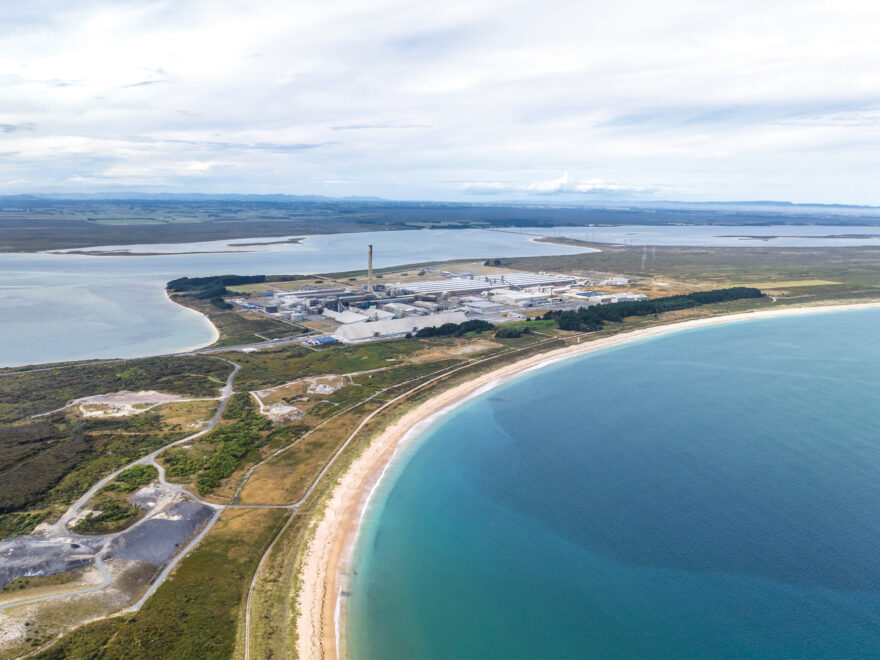The history of the Tiwai Point Aluminium Smelter involves many people and businesses. Between the 14th and 18th century Tiwai Point was an important site for Maori stone tool making, the stone available there being of excellent quality for adzes.
Now in the 21st century it has become the site for making the best aluminium in the world. In 1960 the New Zealand government gave Consolidated Zinc permission to build a smelter at Tiwai Point and a hydro-electric power station at Lake Manapouri to provide the required power. A few years later they realised they couldn’t afford to build both so the government agreed to build the power station as the smelter would only need just under half of what the power station would produce, thereby allowing extra generation to be used elsewhere.
As far back as 1904 it was realised that due to the difference in levels between Lake Manapouri and Deep Cove there was the possibility of creating a hydro-electric power station, but it wasn’t until 1956 the New Zealand Electricity Department (NZED) developed concept plans, and since Comalco Power were not able to manage it the NZED started construction in 1964. Being a state-owned enterprise made it easier for the government to change legislation to allow the NZED to construct the power station within Fiordland National Park, but when the public found out that stage 2 of construction required the raising of the lake level by 8m the people said “enough”.
After excavating 1.4 million tonnes of hard rock to 200m below lake level the 111m long, 18m wide and 39m high machine hall was completed in 1968 and power was first generated in1969. In 1970 the 264,907 signatures on the petition opposing the raising of the lake presented to the government by the “Save Manapouri” Committee was enough to make the government decide against raising the lake the planned 8m, and give up on the idea of raising it the originally planned 30m to join Lake Manapouri with Lake Te Anau. The landscape down that way could have been very different from the beauty we see today, and the extra capacity would only have allowed for an extra 4.5% of generation capacity. The people had spoken and the Fiordland National Park was saved from becoming the Fiordland National Lake.
The Manapouri Power Station was fully commissioned in 1972 with 7 generators planned to provide 700MW, but it was found that the friction between the water and the 180m vertical penstocks combined with the single 10m diameter tailrace tunnel sending the water 10km to Deep Cove limited the output to only 585MW. Once a second tailrace tunnel was completed the extra efficiency
meant output was increased to 850MW, although it is limited to 800MW due to resource consent conditions. In 1999 Meridian Energy became sole owners and operators of the Manapouri Power Station.
In the meantime, construction at Tiwai Point was boosting the Southland economy and job prospects for the whole area, not only for the construction site but suppliers and transport as well. In 1971 the first smelting pot was fired up and metal was made. In it’s first year Tiwai produced 42,000 tonnes of aluminium, now it produces about 330,000 tonnes per year and employs about 1000 workers on site.
Despite generally large profits and wholesale priced electricity New Zealand Aluminium Smelters (NZAS) who own and operate Tiwai Point had considered shutting down in 2021 due to low global aluminium prices and increasing competition from Chinese smelters, but after further consideration they have recently signed a more flexible supply contract to continue accessing electricity from Manapouri until 2044, allowing for less demand during times of low lake levels or high demand around the country.

